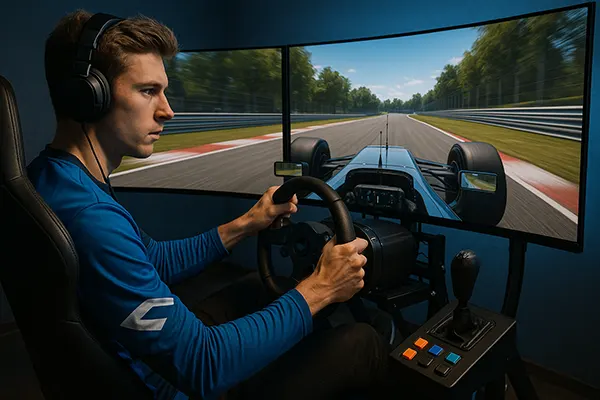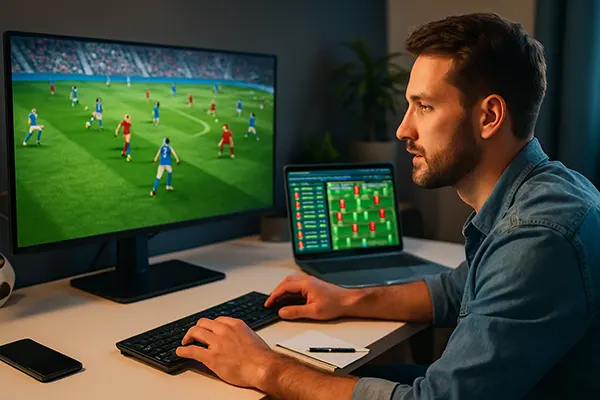
Virtual Simulators as Training Tools for Motorsport Drivers
Modern motorsport demands precision, rapid decision-making, and physical endurance. Traditional training methods, such as karting and track practice, are costly and limited by time and weather. Virtual simulators have emerged as a vital solution, allowing drivers to train in realistic digital environments that replicate real-world racing conditions. By 2025, these simulators are not just supplements but essential tools for developing professional racing skills.
The Technological Foundation of Modern Simulators
Advanced simulators integrate motion platforms, high-resolution visuals, and telemetry systems. This combination allows drivers to experience realistic forces, vehicle dynamics, and track feedback. Developers work closely with racing teams to ensure that the virtual models of cars and circuits match their real counterparts with exceptional accuracy.
Current simulators can replicate tyre wear, fuel consumption, suspension behaviour, and even weather conditions. This level of realism allows drivers to plan race strategies, adapt their driving styles, and anticipate vehicle responses without risking damage or incurring expenses on real tracks.
By utilising real-time data from races, simulators can be updated continuously. This ensures that drivers are always training with the latest information, which sharpens their competitive edge and helps them adapt quickly to evolving technical regulations in motorsport.
Collaboration Between Engineers and Drivers
Effective simulator training involves constant feedback between engineers and drivers. Engineers fine-tune simulation software based on the driver’s inputs, while drivers use these systems to test various setups. This cooperation creates a loop of continuous improvement that boosts both vehicle performance and driver skills.
Many Formula 1 and endurance teams have dedicated simulation departments. These departments analyse driver performance data and provide tailored programmes that target individual weaknesses, helping drivers improve their reaction times, braking techniques, and cornering strategies.
Such collaboration also allows teams to trial new car components virtually before physical prototypes are built. This reduces costs, saves time, and enables quicker adaptation to new technologies introduced by regulatory bodies like the FIA.
Psychological and Cognitive Training Benefits
Racing is not only about mechanical skill but also mental resilience. Simulators help drivers strengthen concentration, decision-making, and stress management abilities. The pressure of simulated competitive environments mirrors real racing scenarios, helping drivers build psychological endurance.
Studies in sports psychology have shown that repeated exposure to simulated high-stress conditions improves a driver’s ability to remain calm and focused during real races. This translates into more consistent lap times and fewer critical mistakes on track.
Moreover, simulators allow drivers to practice mindfulness techniques while driving. This combination of mental training and technical skill-building ensures that they remain composed, alert, and confident throughout long and demanding race sessions.
Reducing Cognitive Load Under Pressure
Simulators train drivers to process vast amounts of information quickly—such as speed, telemetry data, rival positions, and pit strategies. By training the brain to handle this cognitive load under pressure, drivers gain a crucial competitive advantage.
Structured simulator sessions often include sudden mechanical failures or unpredictable race events. Drivers must react instantly, developing instinctive responses that can save crucial seconds and prevent accidents on real circuits.
This mental preparation is particularly important in endurance racing, where fatigue and stress accumulate over many hours. Simulator training conditions drivers to maintain peak cognitive performance even after prolonged periods behind the wheel.

Accessibility and Cost Efficiency of Virtual Training
One of the most significant advantages of virtual simulators is their accessibility. Young drivers and those from regions without nearby race circuits can now train without the massive financial burden of traditional motorsport preparation.
Simulators reduce the need for travel, fuel, vehicle maintenance, and track rental fees. This makes motorsport training more inclusive, broadening the pool of potential talent and allowing skilled drivers to progress based on merit rather than financial resources.
By 2025, several motorsport academies and teams have begun integrating simulators into their junior development programmes, ensuring that future talent receives early exposure to professional-level racing environments from the outset.
The Future of Driver Development
As technology advances, simulators will continue evolving. The integration of artificial intelligence is expected to create adaptive training environments that adjust in real time to the driver’s performance. This will personalise training sessions and accelerate learning.
Furthermore, the increasing use of biometric sensors will provide instant feedback on heart rate, muscle strain, and eye movement. Such data will help trainers optimise both physical and mental conditioning during simulator sessions.
Ultimately, virtual simulators are reshaping how motorsport talent is discovered, trained, and refined. Their growing role ensures that the next generation of drivers will be better prepared than ever for the challenges of competitive racing.


